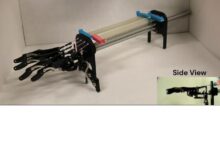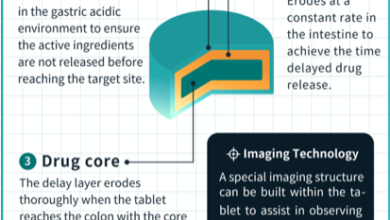
Bacteria can make salmon healthier
Researchers, including from NTNU, are cultivating bacteria-free fish fry. This pursuit is more important than you might think.
Researchers, including from NTNU, are cultivating bacteria-free fish fry. This pursuit is more important than you might think.
“We managed to keep the fry free of bacteria for up to 12 weeks after the eggs hatch,” says Ingrid Bakke. He is a professor in the NTNU Department of Biotechnology and Food Science.
This step has now helped researchers figure out how bacteria and fish influence each other. Understanding their interactions could also one day lead to methods to prevent fish from getting sick and, while it’s a long way off, could be good news for the fishing industry, our future food supply – and not least for the fish themselves.
Researchers have studied how bacteria affect growth, genes, and the mucous membranes of fish.
But first a little about the bacteria in your body.
Trillions of bacteria
Bacteria definitely affect our health, but not only negatively.
As long as we are in our mother’s womb, we live protected and maybe even germ-free, but that ends once we are born. The human body normally contains trillions of bacteria – that’s the number followed by 15 zeros. The same is true for other living organisms.
“Many of our bacteria are necessary for the human body to function. They are necessary for the development of our immune system, and they contribute to digestion and increase the energy value of the food we eat. They protect against disease bacteria and produce the vitamins we need,” says Bakke.
All of these functions and more help us understand the importance of finding out more about how our bacterial friends work.
So how did the researchers do this research?
Knowledge of model systems
“Much of what we know about how bacteria affect host organisms comes from experimenting with model systems,” Bakke said.
What does that actually mean?
Model systems are living organisms that are easy to work with when studying biological processes. Most often, these species are easy to breed, inexpensive to maintain, have a fairly long life cycle and possess easy-to-manipulate genetic traits and other beneficial traits.
The specific characteristics that researchers look for depend largely on what they want to study. Zebrafish, plantain flies and various types of mice and rats are some of the best known species used as model systems.
Bakke and his colleagues chose a different species this time: Atlantic salmon.
Bacteria-free fried salmon
Salmon fry go through a stage where they live in a pouch called the yolk sac. The yolk sac supplies nutrition for the fry.
“We have found a model system where we can keep the yolk sac from salmon fry bacteria during the yolk sac phase for 12 weeks,” Bakke said.
Fish are usually bacteria free in the egg phase, but are colonized by bacteria soon after hatching. Unlike all other salmon, these bred fry lack a natural bacterial community.
The researchers cultured the fish in a protected, germ-free environment, the standard method for keeping bacteria-free salmon. The research group has come up with an efficient and effective method that works for both salmon and fry eggs.
“We treat the fish eggs on the surface to be bacteria-free and store the eggs, and then the fry, in bacteria-free water,” says Bakke.
Knowing how to make fry free of bacteria is important for the group to research later.
Salmon is like a blank slate
Bacteria-free seeds become almost like a blank slate where researchers can add the bacteria they want and then see exactly what happens, without interference from unknown bacteria.
“Bacterial-free model systems are generally important for understanding interactions between bacteria and hosts,” Bakke said. “An example is understanding how the gut microbiota influences the development and health of humans and other mammals.”
The microbiota consists of all the microorganisms found throughout our bodies or parts of our bodies.
“We can use bacteria and bacterial communities that we define, and investigate how hosts and bacteria are affected by living together,” Bakke said.
For example, researchers can investigate what factors control the composition of the bacterial flora in fry. Researchers can then influence the composition of bacteria in fish to avoid negative effects, or they can introduce beneficial effects.
Fried salmon is perfect for research
Zebrafish has been widely used as a model system in this context. But fried salmon has several characteristics that make it a perfect match.
“We have large, well-developed fry, which makes them easier to learn,” says Bakke.
The frying phase was long enough for the researchers to carry out several types of experiments. Because the fry get their nutrition from the yolk sac, the researchers do not need to add fish feed, which can contain microorganisms that interfere with the results of the study. As a bonus, the fries are a sight to behold.
The bacteria was found to affect the mucous layer of the skin in salmon
To date, the researchers have published one article about their findings, but there is more to come. In the first article, they showed that the bacteria affect the protective mucous layer of the skin in fish.
“Salmon has a layer of protective mucus on the surface of its body. It seems that the composition of the bacteria can affect the properties of this slime layer,” said Bakke.
Seeds that weren’t exposed to the bacteria developed a thinner layer of mucus on the outside of their bodies than seeds that were exposed to bacteria specially selected by the researchers, or bacteria from lakes.
Bacteria can also affect fish fat reserves. Seeds that receive bacteria from the lake develop larger fat reserves.
“We needed interdisciplinary expertise to study the effects of bacteria on fish mucus layers. Researcher Sol Gómez de la Torre Canny was key in developing a germ-free model system with the yolk sac,” said Bakke.
Researcher Catherine Taylor Nordgård, a rheologist, characterizes the properties of the layer of mucus covering fish.
Open the door to care for fish
The researchers’ goal was to understand which mechanisms affect the community composition of the bacteria that colonize fish immediately after hatching.
“We looked at how the bacterial community could protect against bacterial infection, and whether it might influence the initial bacterial colonization of the fry,” said Bakke.
Enabling such a probiotic treatment means researchers can add live microorganisms to fish to achieve beneficial effects, such as better health and growth.
“But probiotic treatment on a large scale is still a long way off,” Bakke said.
The Norwegian product Stembiont is available. This is a probiotic product intended for larger fish.
More research is needed for the use of probiotics on a larger scale. This research was funded by the Research Council of Norway through FRIPRO funding.
Reference:
Gómez de la Torre Canny Sol, Nordgård Catherine Taylor, Mathisen Amalie Johanne Horn, Degré Lorentsen Eirik, Vadstein Olav, Bakke Ingrid. A new gnotobiotic experimental system for Atlantic salmon (Salmo salar L.) reveals microbial influences on mucosal barrier function and adipose tissue accumulation during the yolk sac stage. Frontiers in Cellular Microbiology and Infection12 2023 DOI:10.3389/fcimb.2022.1068302
DOI
10.3389/fcimb.2022.1068302
Research methods
Experimental study
Research Subjects
Animal
Article title
New gnotobiotic experimental system for Atlantic salmon (Salmo salar L.) reveals microbial influences on mucosal barrier function and adipose tissue accumulation during the yolk sac stage
Article Publication Date
1-Feb-2023






